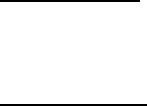 |
|||
|
|
|||
| ||||||||||
|
|  MIL-T-62032H
(c) Bottom load test fluid into the tank until a positive air pressure differential of
18 inches of water is reached. (Opening the bottom loading valve will open the
automatic vents specified in 3.5.11.4 thus pressurizing the vapor recovery line and
the manometer.) Leave the bottom loading valve open. Close all other valves.
Insure that test fluid is not draining back through the bottom loading check valve.
(d) The pressure decay over a 5-minute period shall be observed for conformance to the
1 inch of water requirement of 3.5.11.1(a).
(e) Bottom load additional test fluid into the tank observing the manometer and the
vents to insure that the vents do not open before 18 inches of water is reached and
that the vents do open before 27.7 inches of water is reached (see 3.5.11.1(b)).
(f) Drain test fluid from the tank until a negative pressure differential of 6 inches of
water is reached and hold at that level.
(g) The pressure increase over a 5-minute period shall be observed for conformance to
the 1 inch of water requirements of 3.5.11.1(a).
(h) Drain additional test fluid from the tank observing the manometer and the vents to
insure that the vents open before a vacuum of 10.4 inches is reached
(see 3.5.11.1(c)).
(i) Similar tests conducted by pressurizing the tank through an air hose connected to the
bottom loading flange are not acceptable since vacuum tests on the entire tank
cannot be performed using this method.
4.3.8 Emergency venting. The exposed surface area of each tank compartment shall be
measured and the capacity of each vent determined by its required stamping and certification
(see MC-306). The total venting capacity shall be calculated and compared to the surface area to
determine conformance to the requirements of 49 CFR, section 178.341, specification MC-306.
4.3.9 Parking brake check. On the first production vehicle, for vehicles with air brakes,
the parking brake control in the truck cab shall be set in the "OFF" position. A 4-inch API
coupler shall be connected to the bottom loading adapter. The brakes shall be observed to insure
that they apply. The brakes shall be released and the test repeated with a 2.5 inch D-I type
underwing nozzle connected to the bottom loading adapter. On type III and type IV trucks, the
brakes shall be released and the underwing nozzle removed from its stowage bracket. The
brakes shall be observed to insure that they apply. The override toggle switch on the truck cab
instrument panel shall be checked to insure it overrides the brake interlock only of the underwing
nozzle stowage bracket. For vehicles with hydraulic brakes, the parking brake control in the cab
shall be placed in the "OFF" position and attempts made to connect the 4-inch API coupler and
then the 2.5 inch D-I type underwing nozzle to the bottom loading adapter. The ability to make
either connection with the parking brake off shall constitute failure of the test. The test shall be
repeated with the parking brake set and connection(s) shall then be possible.
56
|
|
Privacy Statement - Press Release - Copyright Information. - Contact Us |